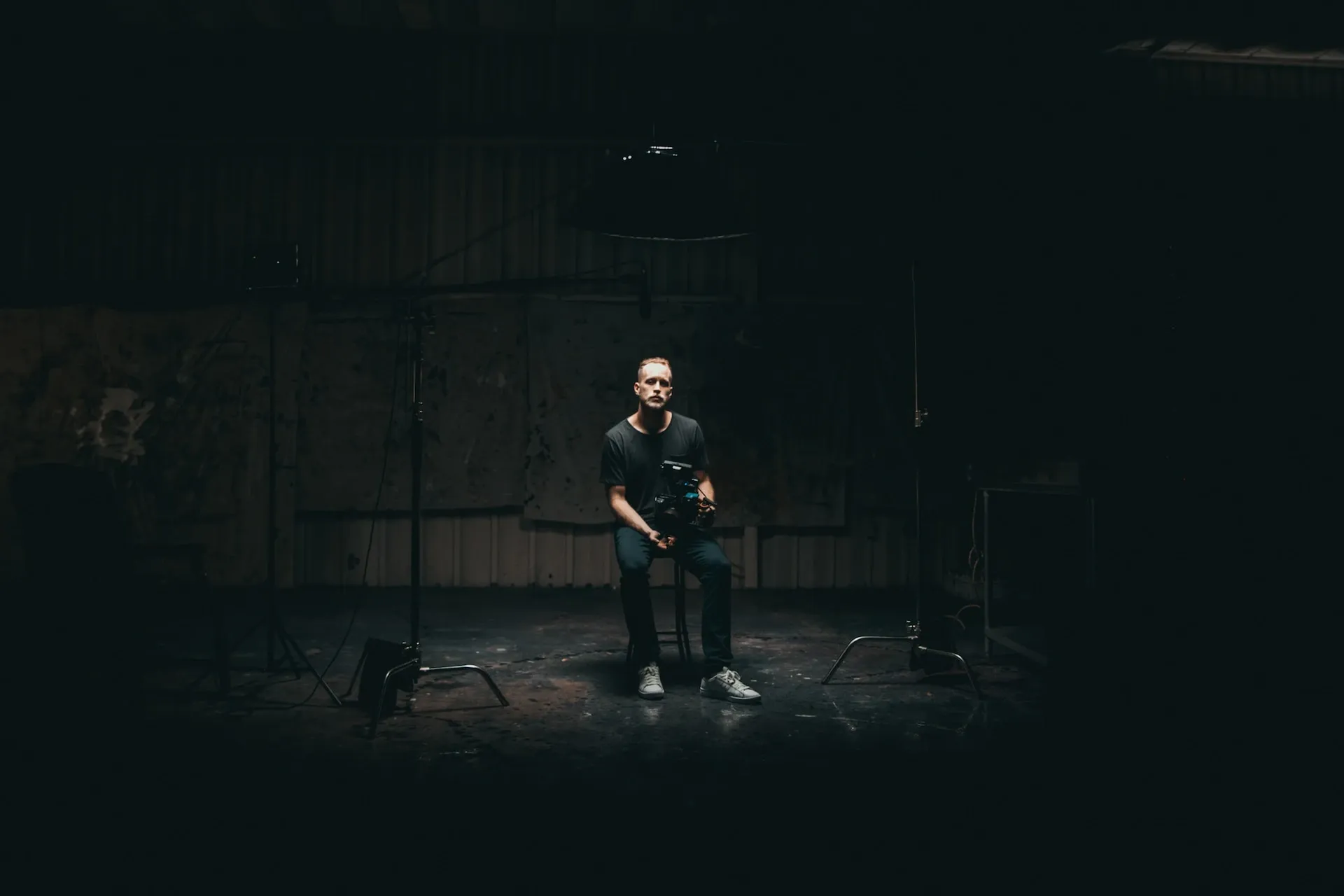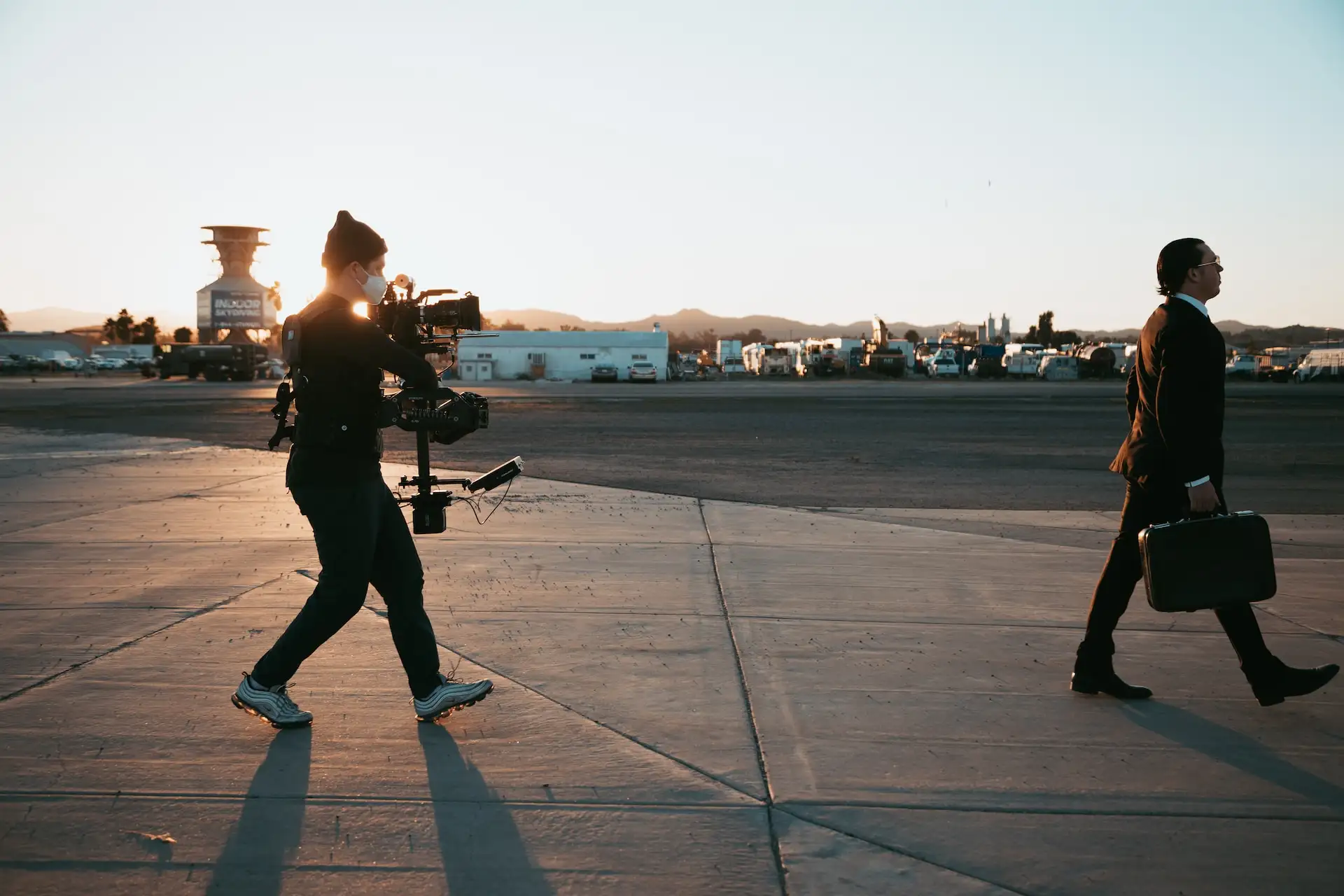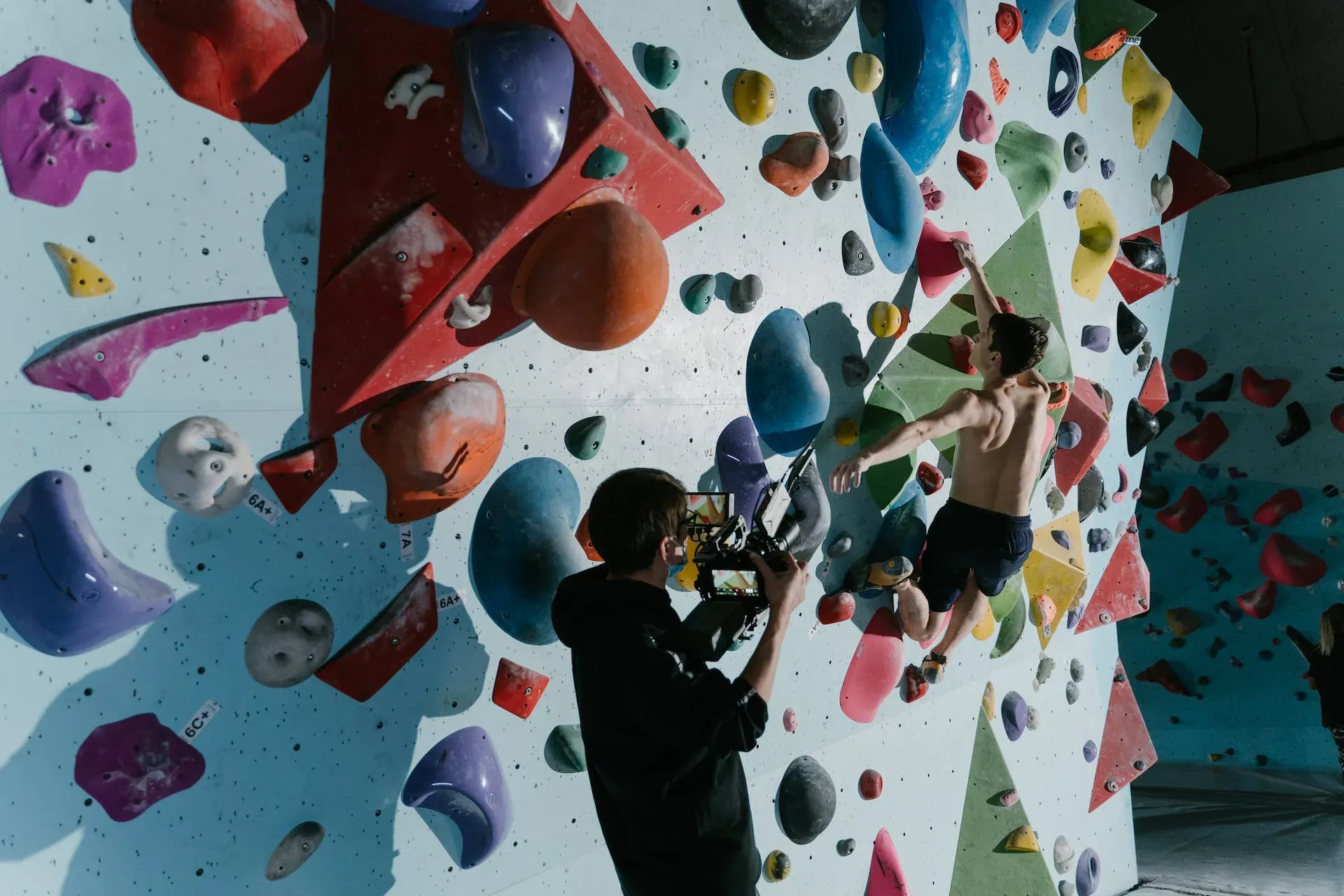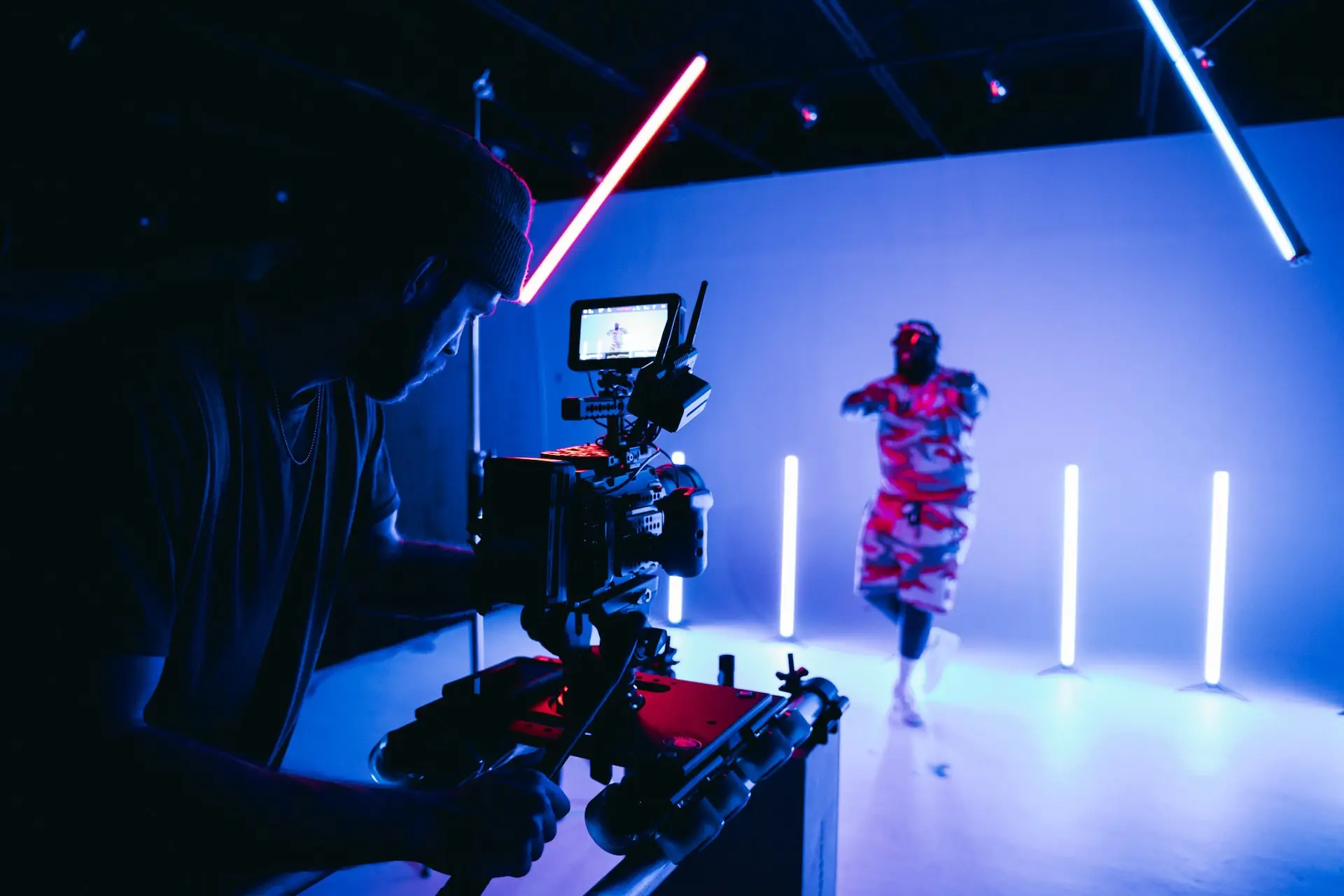What are jump cuts, and how do you edit them?
Jump cuts are a foundational technique in cinema and online storytelling. Learn what they are, how to use them, and why some people swear against them.

What are jump cuts, why do people hate them so much, and should you use them? Let’s take a look at all of that today.
We’ll cover:
- What are jump cuts?
- What’s the point of jump cuts?
- Who popularized jump cuts?
- Do YouTubers use jump cuts?
- Are jump cuts good or bad?
- Why are jump cuts funny?
- How do you make jump cuts look good?
- How do you avoid a jump cut?
- What are the best jump cut examples?
What are jump cuts?
A jump cut is a filmmaking technique that breaks a sequential shot in two, moving from one half to the next. When you edit these halves together, a ‘jump’ is made in the cut, as the subject has moved or changed. It’s a harsh, noticeable transition, clearly showing viewers that the footage has been edited and time has passed.
Jump cuts are achieved by, well, ignoring the basic rules of filmmaking! Most creators will follow the 30-degree rule, positioning each shot at least 30 degrees away from the previous – this establishes proper transitions between shots. Going below 30 degrees means that the transition will be less ‘artistic’ and more concerned about getting from A to B.

You can create a jump cut in one of two ways. The first is by filming one shot, then slicing it in half during post-production, removing a piece of footage in the middle to create the cut. This is a temporal jump cut.
Or, you can film one shot, then record the second half later – if you’re showing someone getting ready, applying makeup, or undergoing some other transformation, you’d likely film it this way. This is called a spatial jump cut.
Jump cuts are sometimes mistaken for match cuts, which are completely different. A match cut happens when moving from one shot to a new scene, but with similar compositions – they ‘match.’ The most well-known match cut is the below from Stanley Kubrick’s ‘2001: A Space Odyssey.’ Iconic, clever, striking… but it’s not a jump cut!
What’s the point of jump cuts?
Jump cuts are often used to hammer home a point. If you’re shooting an advertisement or marketing promo, jump cuts can add urgency to your message. If you’re filming a talking head interview or mockumentary, a well-placed jump cut could give your footage an air of humor.
Jump cuts are also used to iron out creases and remove dead air in your footage. If someone uses lots of fillers and ‘um’s while speaking, jump cuts can remove these instances, condense the speech, and give the finished product a professional finish.
Given how they’re made, jump cuts can be used to signify the passing of time. For example, you could use a jump cut to show someone at the start of an IKEA product assembly and then at the end, looking frustrated and on the verge of tears.

Who popularized jump cuts?
Jump cuts have been around since the birth of film, with French director Georges Méliès paving the way. He used jump cuts to create impossible footage (like a man removing his own head and dancing around with it!).
French New Wave cinema followed, throwing out jump cuts to confuse, disrupt, and entertain. We’ve come a long way since then, but it’s worth remembering that back in the day, jump cuts were their own kind of magic.
Music also helps make magic. Find the perfect soundtrack for your jump cuts every time with Epidemic Sound.

Do YouTubers use jump cuts?
YouTubers are famous for using jump cuts – it’s almost become a mandatory style requirement. The reason so many YouTubers – and creators on other social media platforms – use jump cuts is to speed up their delivery and remove any filler words like ‘um’ and ‘like.’ It makes for a tighter, more direct viewing.
Are jump cuts good or bad?
While jump cuts can be used to amplify a mood or create comedy, they have their detractors. Many filmmakers dislike the technique because it strays from the practice of continuity editing; using jump cuts draws a viewer’s eye to the ‘constructed’ and ultimately fake world created by film.
If you want to get fancy, using jump cuts breaks the fourth wall, exposing onscreen action as something edited and chopped-up. Filmmakers aiming to create realistic, lifelike footage will avoid jump cuts for this reason.
Why are jump cuts funny?
We’ll run through some of the best jump cuts shortly, but you get the idea – they’re often used to make you chuckle. But how do they do it?

The laugh in a jump cut comes from the transition from one thing to the next. If you build something up in one shot, then jump cut to a harsh ‘Nope,’ that contrast can be funny. It doesn’t always work, but if you’ve got funny bones and know how to write humor, jump cuts are a shortcut to the punchline.
After all, most comedic ideas are just two opposing things rubbing against one another. Visualizing that in a jump cut, with the same subject in both shots, helps prove that concept.
How do edit jump cuts to make them look good?
If you don’t edit your jump cuts carefully, they can look strange. Here are some quick tips for editing jump cuts like a boss:
- Cut out all the dead air on your project timeline: Go through your project timeline and cut out all the dead air, using the audio waveform as a guideline. Don’t worry if you don’t remove all the dead air – you can fix that in a second.
- Zoom into the timeline and trim your cuts: Now’s the time to get picky. Zoom into the project timeline, shave away the milliseconds you don’t need, and replay your clips until you get the balance just right.
- But don’t cut it too fine: Otherwise, your footage might seem like one huge sentence with no natural breaks. If you want a happy medium, consider overlapping your two clips with J cuts and L cuts.
- Don’t overuse them: Jump cuts are usually expected, especially in online content. However, if you use them every couple of seconds, they’ll probably grate on your audience. Be selective, and think about why you’re using a jump cut.

How do you avoid a jump cut?
Filmmakers can be forced to make jump cuts if they don’t have enough footage. To avoid unnecessary jump cuts, make sure you’ve shot more footage than you’d hope to use. Some people swear by the 10x rule, capturing 10 times the amount of film they plan to use.
If you’re filming an interview or another static scene, stock up on plenty of B-roll and alternate angles. This gives you the freedom to cut between different points of interest while still focusing on the subject and what they’re saying.
If you don’t have additional footage to hand, fear not. There are a couple of tricks you can pull out to remove jump cuts. One of the more common tactics is to whack some zoom onto your footage in post-production. Use your

If zooming doesn’t float your boat, you can go one step further and try another technique. One such fix is DaVinci Resolve’s ‘Smooth Cut’ feature, which is often used to cover up mistakes or dead air. However, if you use it to link two similar shots, Smooth Cut can link them together. The result will hold the ‘original’ shot for longer, which looks better than transitioning to a near-identical shot.
And if you’re still not happy with how your jump cut looks, you can always break it up with a graphic or transition. Premiere Pro’s packing a ton of the latter, which can lend your footage a start/end quality, rather than just feeling like two samey shots bunched together.
What are the best jump cut examples?
Now that we’ve learned what jump cuts are, why they’re used, and some tips to remember, let's finish with a few examples.
The Haunted Castle (1896)
We’re swinging back to Georges Méliès with his short film, The Haunted Castle. It’s a three-minute exercise in jump-cuttery, using the technique to make characters disappear, turn into bats, and more. It’s not scary, but as a technical feat in the 1800s, it’s incredible.
Little Shop Of Horrors (1986)
The remade Little Shop Of Horrors is a blast, blending comedy, musical theater, and flesh-eating plants like nothing else. The below scene happens early on, giving viewers a comical glimpse into the characters’ lives: the jump cuts demonstrate an hour passing in their flower shop, Vincent Gardenia’s character noting, “Six o’clock, and we haven’t sold so much as a fern.”
theneedledrop
Anthony Fantano, AKA the internet’s busiest music nerd, is one of today’s most notable jump cutters. He knowingly overuses them during his album reviews, mostly for comedic effect; he even prefaces some of them by saying, ‘Tran…sition!’
Some guy (2012)
This is just some guy. He’s looking for something, or someone. We don’t know what, we don’t know why. But the jump cuts ramp up the tension, the stress – we don’t see any of the things he’s looking at, but we can tell that he’s searched that whole corridor without any luck. It’s been over a decade, so hopefully he’s found whatever it was.
So, that’s jump cuts. Whether you love them, hate them, or are just strangely fascinated by them, they’re a crucial piece of filmmaking. Do your creative work justice with a soundtrack to back it up – Epidemic Sound’s catalog of more than 50,000 tracks has got you covered.
Our catalog is high-quality, affordable, and safe. An Epidemic Sound subscription goes beyond royalty-free music, removing the headache of licensing and freeing you up to do what you do best. You can enjoy the safety of our license hand-in-hand with our massive catalog, covering just about every genre you can think of. You’ll also gain unlimited access to our advanced search functions — finding the right sound’s never been easier.
It’s better than royalty-free. It’s worry-free. Get started with Epidemic Sound below.

Are you a filmmaker? We've got you covered with background music for videos, including:
Take your video editing to the next level with our massive catalog of music for filmmakers.

